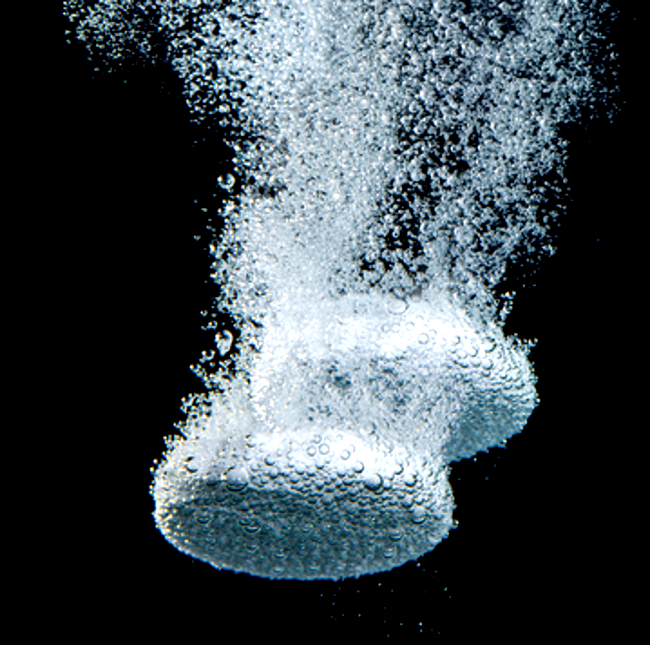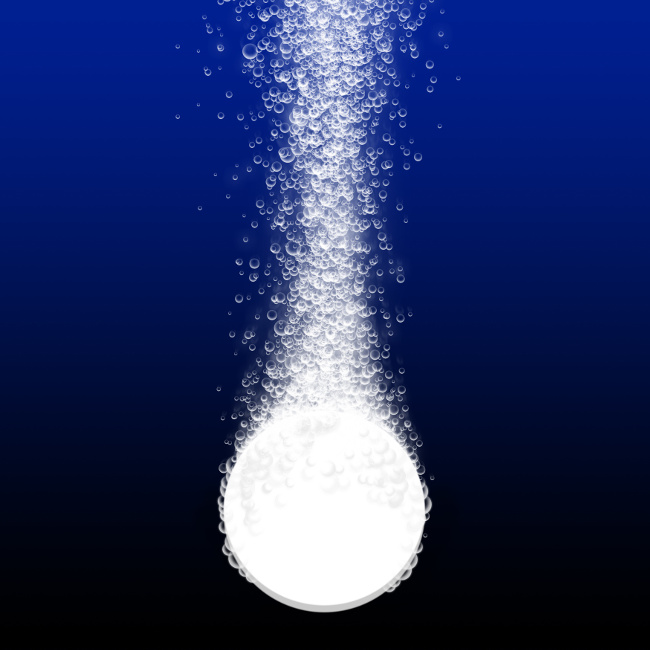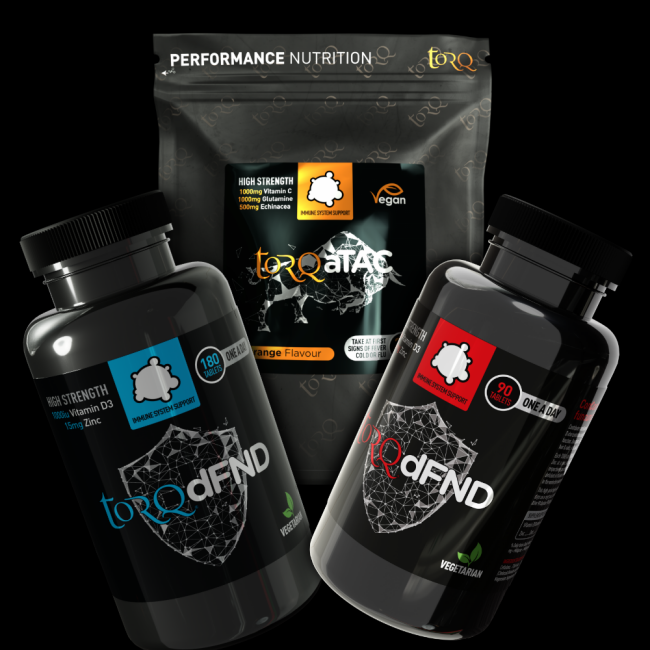Vitamin C deficiency has been renowned for causing scurvy since the ancient Egyptian times. Although this condition is now thankfully rare, are we actually getting enough of this nutrient, particularly when we fall ill?
There are an enormous number of studies linking Vitamin C to immunity and the European Food Standards Agency (EFSA) recognises Vitamin C as providing ‘Maintenance of the normal function of the immune system’ but when you dig deeper into the studies, it becomes clear that Vitamin C may have huge benefits with regard to helping the immune system to actually fight an infection, whilst having a rather less profound effect on preventing you from getting an infection in the first place. It’s this nuance that we believe is misunderstood about this amazing micronutrient.

The RDA for Vitamin C is just 40mg and this is considered the minimum amount to prevent scurvy (the disease sailors used to get as a result of months of vitamin C deficiency), but it’s widely accepted that it’s not a toxic substance, so taking up to 1,000mg per day shouldn’t have any side effects. That said, why take 1,000mg per day when you only need 40?
It’s the human body’s enormous requirement for Vitamin C when it gets infected which is quite staggering. Most mammals are able to manufacture their own Vitamin C rapidly from glucose but humans can’t. Why this very useful biochemical pathway has evolved out of us as a species is not known, but for instance cats and dogs will manufacture their own Vitamin C at gram quantities when they get infected – probably why you never see your pet with cold!
When we become infected with a virus or bacteria, substances called ‘Free Oxygen Radicals’ are produced, often called ‘Free Radicals’ for short. In simple terms, free radicals are unbalanced atoms. A stable atom has an equal number of electrons surrounding it and can support biological functions, but an unbalanced atom will wreak havoc, attacking vulnerable cells and making them more susceptible to infection. According to Carr and Maggini (2017) Vitamin C works as an electron donor, providing the unbalanced atoms with the electron they are missing, stabilising them and increasing resistance to infection. Vitamin C is termed an ‘antioxidant’ for this reason, it reverses/prevents the oxidative damage caused by free radicals.
Where the studies/reviews into Vitamin C appear to be less flattering are in those which look at the nutrient as a preventative treatment – to stop you getting sick in the first place. There is little evidence to support consuming amounts above the RDA to ward off infection. Similarly, lower doses of the nutrient once infected are likely to have little effect because at this point the human body’s requirement is significant. They key to using vitamin C effectively appears to be to maintain high intakes (gram quantities) at the point of infection and this is called ‘Mega Dosing’.
Hickey and Roberts (2005) criticised the conclusions of many researchers over the last 60 years for not considering the pharmacokinetics of Vitamin C – the way the body reacts to a drug/nutrient, the time it takes to move through the body and it’s absorption/bioavailability. They suggest that small doses, in the 100’s of milligrams taken infrequently is like throwing stones at machine guns in the war against infection (our words, not theirs). Even mega doses taken infrequently will have limited effect, because of the speed at which the vitamin is used up at times of infection. The researchers suggest an extreme protocol involving a 10g (10,000mg) initial mega dose at the first sign of infection, followed by at least 2g (2,000mg) per hour thereafter.
Hickey and Roberts also suggest in the same review, when talking about an effective frequency for taking Vitamin C, that ingestion should be every 2-3 hours to maintain sufficient levels within the blood, but either way, the suggestion is to take a very high initial dose followed up by regular doses in gram quantities to keep concentrations high in the body. They also discuss a concept called ‘titration to bowel tolerance’ suggesting that as an infected body is so desperate for Vitamin C that the only way of knowing if you’ve had enough is to keep consuming it until it affects your bowels. A recognised side effect of overconsumption of Vitamin C is diarrhoea – their argument is that if you’re not infected, relatively small amounts of Vitamin C could cause this issue, because the body simply can’t use the nutrient and has to excrete it, but when infected the intake threshold is raised significantly.

Gorton and Jarvis (1999) published a study addressing a mega dose protocol and the results were highly significant. Subjects consumed 1g (1,000mg) every hour for 6 hours at the onset of a viral infection, followed by 1g (1,000mg) 3 times per day. The results demonstrated an 85% reduction in cold/flu symptoms as a result. This was a notably lighter protocol than anything proposed by Hickey and Roberts, but still provided significant results.
We are entirely aligned with the concept of mega dosing at TORQ. If you’re not sick, let a healthy balanced diet supply the Vitamin C you need – an orange a day will do this easily. If you feel yourself coming down with something, at the first available opportunity you should follow a mega dosing protocol. Please refer to the final section of this resource entitled Conclusions & Recommendations where we incorporate Vitamin C mega dose supplementation into a comprehensive protocol for fighting infection.
Vitamin C and Covid-19: We must clarify that the Covid-19 pandemic is an ever-evolving situation and there is still much to understand about this virus. Although new evidence in emerging all the time, only the treatments that have been recognised by the MHRA as being effective against the disease should be relied upon at this stage. It is interesting to note however that most colds and flu infections come from different types of coronaviruses and that there is perhaps a logic to the notion that what has been proven to work for colds and flu may also apply to Covid19.
An article in March 2020 published on medicinenet.com discusses how the Department of Critical Care Medicine at Zhongnan Hospital of Wuhan Univerity, China have registered a clinical trial looking at the effects of mega dosing Vitamin C to the tune of 24g (24,000mg) per day for 7 days via an IV drip in the treatment of patients in a critical condition with Covid-19. The clinical trial background has been published HERE. In the article, Dr Cheng, the editor of the Orthomolecular News Service was interviewed and referred to the principle investigator of the clinical trial:
“…the principle investigator of the first high-dose IV vitamin C trial in China has told him (Dr Cheng) that the preliminary results of the study are promising. The investigator said the administration of 24 grams per day to COVID-19 patients leads to significant reductions in inflammation. Dr. Cheng said this is notable because massive inflammation in the lungs and potentially other organs may be fatal in the illness.”
And also:
“To the best of his knowledge, Dr. Cheng said the so-called “Shanghai Plan” published on March 1 (2020) is the first and only official government guideline for using vitamin C for something as serious as the novel coronavirus. He said there is a push to get additional Chinese hospital groups to study oral liposomal vitamin C for treatment of the virus because oral forms can be administered rapidly and widely to large numbers of affected patients.”
What isn’t clear and perhaps won’t be for some time is whether mega dosing orally with Vitamin C at an earlier point in the infection timeline could have prevented or reduced the chances of such a severe outcome for these patients.
More recently (December 2020) nutraingredients.com published an interesting article where they refer to about 350 leading researchers, doctors, healthcare professionals and nutritionists who have backed the VitaminC4Covid campaign in support of oral mega-dosing with Vitamin C or its use intravenously in intensive care to halt the onset of severe Covid19 symptoms. Their website criticises the suggestion that the use of Vitamin C in the fight against Covid19 is considered by many as being ‘fake information’.
Within the same article, the author quotes Patrick Holford, who established the Institute for Optimum Nutrition in 1984 with Nobel Prize-winning Vitamin C researcher Linus Pauling as saying:
“We’ve had 11 viral epidemics this century. The reality is there will be more. Vaccines, by their nature, are reactive. Vitamin C, together with Vitamin D and Zinc are proactive. Keeping one’s immune system strong is a critical part of any anti-viral strategy.”
We can provide insight into the latest research and what ‘might’ help you should you be unfortunate enough to contract Covid19, but ultimately you will have to draw your own conclusions from the information you digest from a variety of sources. Medical treatments have now been approved in the fight against the disease and at the time of writing, proven vaccines are also being rolled out across the country. Let’s hope that in the future, all we need to worry about are colds and flu and that if mutations of Covid19 do exist, more continues to be understood about their effective treatment.
Since this research was undertaken, TORQ have used it to develop TORQ aTAC, a product specifically formulated to reduce the symptoms and duration of colds and flu. It utilises a mega-dosing protocol of Vitamin C, Glutamine and Echinacea. For further information or to purchase this product, click HERE.

With regard to Dr Linus Pauling’s recommendations for supplementing with Vitamin D and Zinc above, also take a look at our dFND products by clicking HERE.
We also discuss the interaction of these nutrients in detail in our Immune System Support Resources.
If you have any questions about this article or anything else on this website, please email enquiries@torqfitness.co.uk or phone 0344 332 0852.
REFERENCES:
De Tullio, M. C., 2010. The Mystery of Vitamin C. Department of Plant Biology and Pathology, University of Bari: Nature Education 3(9):48
Pham-Huy, L.A., He, H. and Pham-Huy, C., 2008. Free radicals, antioxidants in disease and health. International journal of biomedical science: IJBS, 4(2), p.89.
Fitzgerald, L., 1988. Exercise and the immune system. Immunology today, 9(11), pp.337-339.
Carr, A.C. and Maggini, S., 2017. Vitamin C and immune function. Nutrients, 9(11), p.1211.
Hickey, S. and Roberts, H., 2005. Misleading Information on the Properties of Vitamin C. PLoS Med 2(9): e307.
Richard Z. Cheng, R.Z. 2020. Preliminary Report of Chinese High Dose Vitamin C for Covid-19 Treatment Studies. Orthomolecular Medicine News Service, August 16, 2020. (unpublished)






